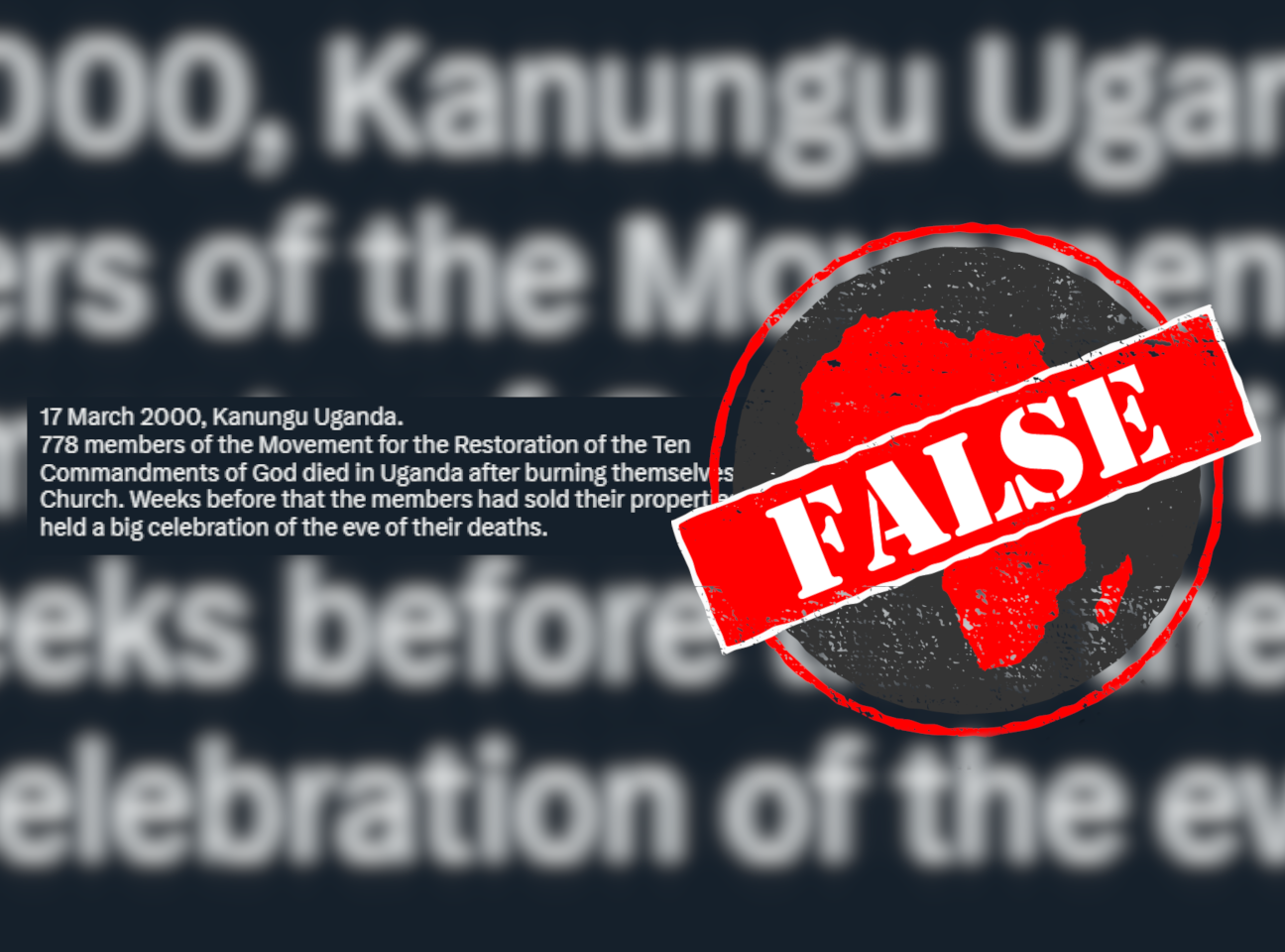IN SHORT: A graphic image of several charred bodies is being shared on social media in Kenya, with the claim it shows a sectarian massacre in Uganda in 2000. While the incident did take place, this photo is unrelated.
Warning: This article links to content with graphic and upsetting photos.
In April 2023, Kenya was gripped by the horrific discovery of mass graves linked to a Christian church in the Shakahola forest near the coastal town of Malindi.
Followers of the Good News International Church were reportedly convinced that they would go to heaven and “meet Jesus” if they starved themselves.
More than 100 bodies have been exhumed from sites in the forest at time of publication.
Since then, Kenyan social media platforms have been flooded with cult stories from different countries as users try to draw parallels.
On 24 April, a Kenyan Twitter user posted a graphic photo showing dozens of charred bodies, claiming it showed members of a Ugandan church who died “after burning themselves”.
They tweeted: “17 March 2000, Kanungu Uganda. 778 members of the Movement for the Restoration of the Ten Commandments of God died in Uganda after burning themselves in a Church. Weeks before that, the members had sold their properties and held a big celebration on the eve of their deaths.”
This tweet has been viewed more than 265,000 times. The same claim was also posted on Facebook here, here and here.
A cult-related massacre did happen in the Kanungu district of southwestern Uganda in 2000 and 700 members of the Movement for the Restoration of the Ten Commandments of God burned to death.
Members of the doomsday cult believed the world would end at the turn of the millennium. According to reports, the doors and windows of the church they were in were nailed shut and the building set on fire.
But does this photo show victims of the fire in March 2000? We checked.

Oil tanker explosion in the Democratic Republic of the Congo in 2010
A TinEye reverse image search of the photo revealed that it shows victims of an oil tanker explosion in the Democratic Republic of the Congo (DRC) in 2010.
At least 230 people were killed and more than 100 injured. The tanker overturned while trying to overtake a bus. The victims were trying to collect leaking fuel from the truck when the fuel ignited, possibly from a lit cigarette.
The oil tanker explosion was widely reported at the time. Articles published by Al Jazeera and CNN show similar scenes of the incident as in the viral photo.
In 2014, Africa Check debunked a series of photos showing the same scene of badly burned bodies lying in the open.
Although the photo is genuine, it is not evidence of the Ugandan cult massacre of 2000. It shows the aftermath of a fuel tanker explosion in the DRC 10 years later, in 2010.
Republish our content for free
For publishers: what to do if your post is rated false
A fact-checker has rated your Facebook or Instagram post as “false”, “altered”, “partly false” or “missing context”. This could have serious consequences. What do you do?
Click on our guide for the steps you should follow.
Publishers guideAfrica Check teams up with Facebook
Africa Check is a partner in Meta's third-party fact-checking programme to help stop the spread of false information on social media.
The content we rate as “false” will be downgraded on Facebook and Instagram. This means fewer people will see it.
You can also help identify false information on Facebook. This guide explains how.


Add new comment